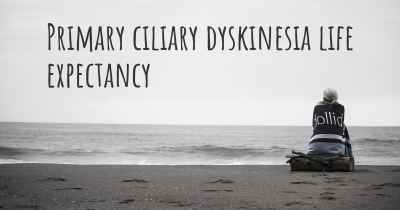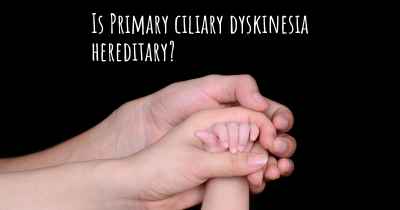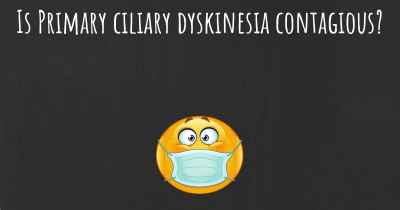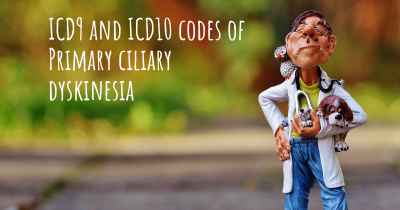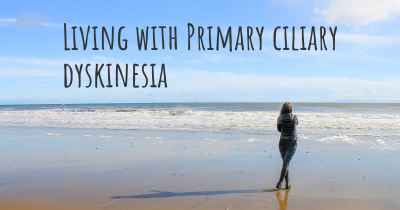Is there any natural treatment for Primary ciliary dyskinesia?
Are there natural treatment(s) that may improve the quality of life of people with Primary ciliary dyskinesia? Here you can see if there is any natural remedy and/or treatment that can help people with Primary ciliary dyskinesia

Exploring Natural Treatment Options for Primary Ciliary Dyskinesia
Primary ciliary dyskinesia (PCD) is a rare genetic disorder that affects the function of cilia, tiny hair-like structures found in the respiratory tract, reproductive system, and other parts of the body. These cilia play a crucial role in moving mucus, bacteria, and other foreign particles out of the body. When cilia are not functioning properly, it can lead to chronic respiratory infections, fertility issues, and other complications.
While there is currently no known cure for PCD, there are several natural treatment approaches that can help manage the symptoms and improve the quality of life for individuals with this condition. It is important to note that these natural treatments should be used in conjunction with medical interventions and under the guidance of healthcare professionals.
Diet and Nutrition
A healthy diet can support overall well-being and potentially alleviate some symptoms associated with PCD. Consuming a balanced diet rich in fruits, vegetables, whole grains, and lean proteins can provide essential nutrients and antioxidants that support the immune system and reduce inflammation. Omega-3 fatty acids found in fatty fish, flaxseeds, and walnuts have anti-inflammatory properties and may help manage respiratory symptoms.
Additionally, avoiding processed foods, excessive sugar, and unhealthy fats can help reduce inflammation and support respiratory health. Staying hydrated by drinking an adequate amount of water throughout the day is also important for maintaining healthy mucus production and preventing dehydration.
Physical Activity and Breathing Exercises
Regular physical activity and specific breathing exercises can be beneficial for individuals with PCD. Engaging in aerobic exercises such as walking, swimming, or cycling can help improve lung capacity and overall cardiovascular health. It is important to start slowly and gradually increase the intensity of the exercises to avoid overexertion.
In addition to aerobic exercises, breathing exercises like deep breathing, pursed-lip breathing, and huff coughing can help clear mucus from the airways and improve lung function. These exercises should be performed under the guidance of a respiratory therapist or healthcare professional who specializes in respiratory conditions.
Airway Clearance Techniques
Various airway clearance techniques can assist in removing excess mucus from the respiratory tract. These techniques can be performed using devices such as positive expiratory pressure (PEP) devices, oscillatory positive expiratory pressure (OPEP) devices, and high-frequency chest wall oscillation (HFCWO) devices. These devices help create vibrations or pressure changes in the airways, facilitating the movement of mucus and improving lung function.
It is crucial to consult with a respiratory therapist or healthcare professional to determine the most suitable airway clearance technique and receive proper training on how to use the devices effectively.
Environmental Considerations
Creating a clean and healthy environment can significantly impact respiratory health for individuals with PCD. Avoiding exposure to smoke, pollutants, and other respiratory irritants is essential. Maintaining good indoor air quality by using air purifiers, keeping humidity levels in check, and regularly cleaning living spaces can help reduce the risk of respiratory infections and exacerbations.
Stress Management and Emotional Support
Living with a chronic condition like PCD can be emotionally challenging. Stress and anxiety can negatively impact overall well-being and potentially worsen symptoms. Therefore, adopting stress management techniques such as meditation, yoga, deep breathing exercises, and engaging in activities that promote relaxation can be beneficial.
Seeking emotional support from friends, family, or support groups can also provide a valuable outlet for sharing experiences, gaining insights, and finding encouragement.
Conclusion
While natural treatments cannot cure Primary Ciliary Dyskinesia, they can play a supportive role in managing symptoms and improving the overall quality of life for individuals with this condition. A holistic approach that includes a healthy diet, regular physical activity, airway clearance techniques, environmental considerations, and stress management can contribute to better respiratory health and general well-being.
It is important to consult with healthcare professionals, including respiratory therapists and physicians, to develop an individualized treatment plan that combines natural approaches with medical interventions to effectively manage PCD.
